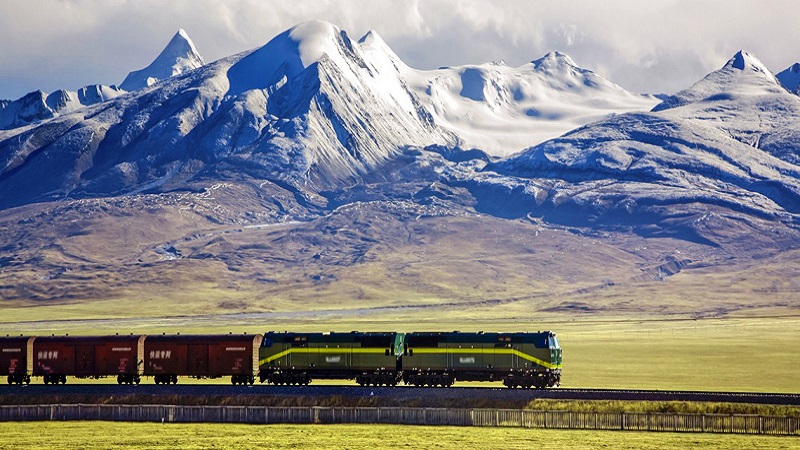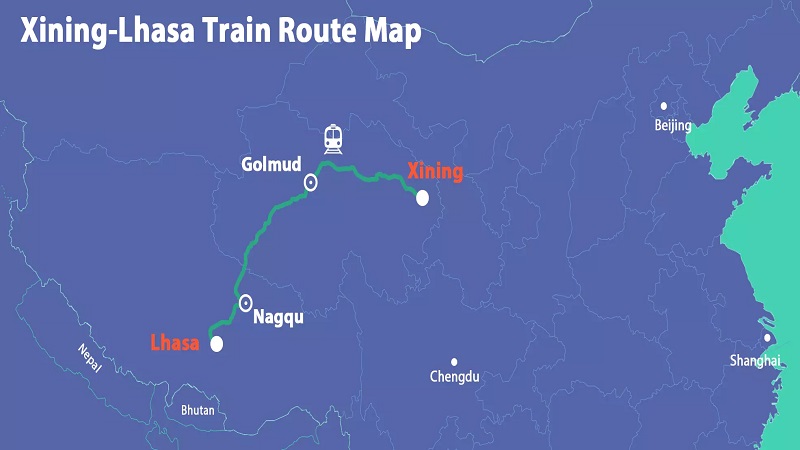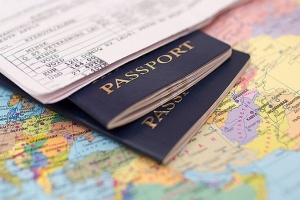The Xining–Lhasa train journey covers a breathtaking 1,972 km (1,233 miles) across the world‑famous Qinghai‑Tibet Railway, connecting the capital of Qinghai Province, Xining (2,261 m), to Tibet’s spiritual heart, Lhasa (3,650 m). Over approximately 21 hours, this gradual ascent allows travelers to acclimatize comfortably to high altitudes while witnessing ever‑changing landscapes—from verdant plains and salt lakes to snow‑capped peaks. As the gateway to Tibet by rail, Xining Station serves as the central hub for every service to Lhasa, offering pressurized, oxygen‑enriched carriages and UV‑filtered windows to ensure both comfort and safety. Below, you’ll find a detailed breakdown of schedules, station logistics, onboard amenities, and the many advantages of choosing this extraordinary overnight route.
The Qinghai‑Tibet Railway: A Milestone in Engineering

Completed in 2006, the Qinghai‑Tibet Railway remains the highest and most spectacular rail line in the world. Starting at Xining—where passenger services date back to 1959—the route climbs steadily across permafrost plateaus, weaving past pristine nature reserves and holy lakes. Engineers equipped every train bound for Lhasa with:
- Pressurized cabins to mimic lower‑altitude pressures
- Continuous oxygen supply systems for added altitude comfort
- UV‑protective windows to guard against intense high‑plateau radiation
These innovations let passengers focus on the vistas outside—and ease any concerns about altitude sickness.
Train Schedules from Xining to Lhasa

Below is the lineup of services that originate or pass through Xining en route to Lhasa. All trains listed operate with full oxygen supply and pressurization systems. For the best daytime scenery, consider the Z165 service, which traverses key natural and cultural landmarks in daylight hours.
| Train No. | Route & Frequency | Departure → Arrival | Duration | Soft Sleeper (CNY/USD) | Hard Sleeper (CNY/USD) |
|---|---|---|---|---|---|
| Z323 | Chengdu → Lhasa (Every other day) | 11:42 → 07:41 (+1 day) | 19 h 59 m | 781 / 120 | 495 / 76 |
| Z223 | Chongqing → Lhasa (Every other) | 11:42 → 07:41 (+1 day) | 19 h 59 m | 781 / 120 | 495 / 76 |
| Z8981 | Xining → Lhasa | 12:50 → 10:20 (+1 day) | 21 h 30 m | 781 / 120 | 495 / 76 |
| Z21 | Beijing → Lhasa | 15:07 → 11:42 (+1 day) | 20 h 10 m | 781 / 120 | 495 / 76 |
| Z265 | Guangzhou → Lhasa | 18:19 → 14:54 (+1 day) | 20 h 35 m | 781 / 120 | 495 / 76 |
| Z165 | Shanghai → Lhasa | 19:28 → 15:30 (+1 day) | 20 h 02 m | 781 / 120 | 495 / 76 |
| Z9821 | Xining → Lhasa | 21:10 → 17:04 (+1 day) | 19 h 54 m | 781 / 120 | 495 / 76 |
| Z8991 | Xining → Lhasa | 21:50 → 18:26 (+1 day) | 20 h 36 m | 781 / 120 | 495 / 76 |
Soft Sleeper cabins contain four berths per compartment; Hard Sleeper cabins contain six berths per compartment.
Getting to Xining Railway Station
Xining serves as the prime embarkation point for Tibet‑bound travelers. Only Xining Railway Station (西宁站) offers passenger services among the city’s three stations.
Address: No. 128 Huzhu Road, Chengdong District, Xining City
- From downtown (8 km):
- Bus: Lines 1, 3, 5, 7, 9, 11, 16, 20, 27, 28, 31, 36, 40, 103, 104, 107, and 501 (night)
- Taxi: ~24 minutes, ~CNY 35
- From Xining Caojiabao Airport (26 km):
- Airport Bus: Line 1 to Chengdong District, CNY 21, ~1 hour
- Taxi: ~30 minutes via Beijing‑Tibet Expressway (G6)
Booking tickets in advance is advised, especially during peak travel seasons (summer holidays and national festivals).
Experience & Facilities on Xining to Lhasa Train
Cabins and Comfort
- Soft Sleeper (First Class): Four‑berth enclosed compartment; lockable door; reading lights; power outlets.
- Hard Sleeper (Second Class): Six‑berth open bay; communal setting; upper, middle, and lower berths.
- Oxygen Supply: Both cabin types feature individual oxygen outlets and continuous ambient oxygenation.
- Climate Control: Pressurized environment maintains oxygen levels equivalent to ~2,400 m altitude.
Dining and Amenities
- Dining Car: Offers simple hot meals, snacks, tea, and coffee throughout the journey.
- Toilets & Washbasins: Located at the end of each coach.
- Water Supply: Complimentary boiled water is available; bring your own tea or coffee to brew onboard.
Advantages of the Xining–Lhasa Route
- Shortest Tibet Rail Link: At around 20–21 hours, this is the quickest way by train to reach Lhasa, requiring just one overnight journey.
- Gentle Altitude Gain: Rising from Xining’s 2,261 m to Lhasa’s 3,650 m over nearly a day helps minimize the risk of altitude sickness.
- High Ticket Availability: As the busiest feeder station, Xining offers more seat and berth options than other departure cities.
- Direct Services from Xining: If you start here, there’s no need to swap trains or transfer—trains already equipped for high‑plateau travel depart directly.
- Explore Xining’s Attractions: Before departure, visit the famed Kumbum Monastery or the historic Dongguan Mosque to enrich your plateau experience.
Scenic Highlights Along the Xining to Lhasa Train

1. Qinghai Lake
China’s largest saltwater lake stretches over 4,456 km². In summer its grasslands bloom; in winter, it freezes into a shimmering ice mirror.
2. Hoh Xil Nature Reserve
A UNESCO site, this high‑altitude reserve shelters Tibetan antelope, wild donkeys, and yaks among glacial streams and salt flats dotted with “salt flowers.”
3. Tanggula Mountains & Pass
At 5,231 m, the Tanggula Pass is the highest point on the Qinghai‑Tibet Railway and the world’s highest railway pass, lying amid peaks up to 6,839 m.
4. Cona Lake
The world’s highest freshwater lake (4,800 m) is revered as a “holy lake.” The rail tracks skirt just 20 m from its tranquil shores.
Tips for a Smooth Train Journey
- Arrive Early: Station crowds swell before train departures—arrive at least 60 minutes ahead.
- Layer Up: Temperatures can fluctuate widely; pack warm clothing even in summer.
- Stay Hydrated: Sip water regularly to fend off dehydration at high altitude.
- Secure Valuables: Lockable Soft Sleeper compartments make it easy to safeguard luggage.
- Charge Devices: Power sockets are available but can be in high demand; bring a power bank.
Embarking on the Xining to Lhasa train is more than a means of transport—it’s an odyssey through some of the most stunning and secluded reaches of the Tibetan Plateau. Whether you’re a first‑time visitor seeking gentle acclimatization or a seasoned traveler yearning for awe‑inspiring vistas, this iconic rail route delivers both convenience and unforgettable scenery. Safe travels on your journey to Tibet’s majestic roof!










